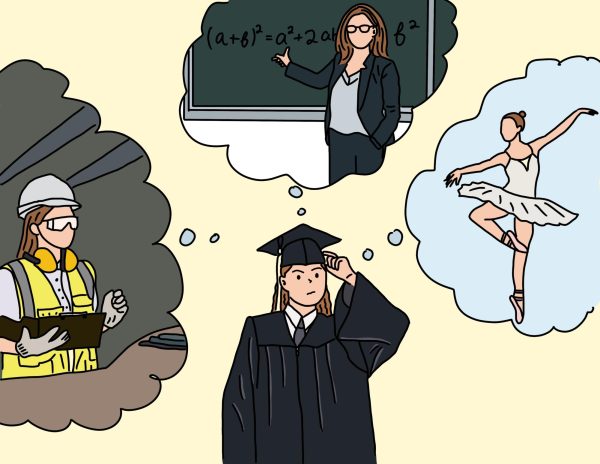Doomed by Disney
October 31, 2014
This summer, I received some of the best advice I have heard in a long time. Regarding relationships, a man told me, “If something is bothering you, it’s your problem to fix, not your partner’s.”
Moments later, he recounted the first few years of his marriage and how he would come home from work to a dirty house and out of frustration, nag his wife.
He explained that it took him years to understand that what he considered a mess truly didn’t bother his wife. Therefore, the state of their home was his problem; so he fixed it.
At the same time, his wife was frustrated with the excessive amount of time he spent outdoors.
“She realized that she was never going to get me inside, so she had to come out,” he said.
The couple celebrated their 40th anniversary in August.
While I love this anecdote for many reasons, I share it today because it bridges an important gap: the space between our ideas about how love should look and how it functions in the real world.
At the risk of sounding cynical, this is true love and conveniently, the antithesis of a Disney storyline. Love is practical, honest and defined by the amount of work you put in.
This week I set out to explore the practical side of love, for myself and for all the men and women of my generation that grew up believing you would fall in love with the man that returned your slipper.
I interviewed Herbert Robbins, a clinical psychologist from New York with more than 50 years of experience in the field. Robbins outlined the foundation of a lasting partnership: trust, respect, and effective communication.
Early on in the conversation, Robbins made a distinction between the person we’re with and our perception of that person.
“Sometimes when I’ve gone to weddings, I’ve gotten double vision. It’s the groom’s fantasy of the bride and the bride’s fantasy of the groom, and they’re not really marrying each other,” he said.
Robbins explained that early on, we tend to idealize our partner and ignore details that don’t fit with the image generated in our head. However, these quirks or qualities present themselves down the road.
“We often think ‘He’ll grow out of it,’ or ‘I’ll change that,’” Robbins said.
While people change, personality traits remain fairly stable throughout our life.
“When you meet people, what you see is generally what you get,” Robbins said.
But as we weather the storm of life, we learn, grow, and change in different ways.
“I think of it like you could plant two seeds or trees that are the same, but they grow differently,” Robbins said.
It’s the ability to grow together that defines a lasting partnership. Such cultivation requires constant, healthy communication.
“People just want to feel free to say whatever they want,” Robbins said. “You want to speak and be understood. You want to be able to connect.”
Failure to connect is often the beginning of the end.
“I think poor communication is the number one reason people don’t stay together,” Robbins said. “There are reality elements like financial pressures, sickness, and work, but a good relationship can ordinarily survive those things.”
The freedom and safety to air grievances fosters effective communication skills and is fairly rare in institutionalized social settings like schools.
“People don’t learn effective communication skills growing up,” Robbins said.
Robbins joked that although he may be biased, everyone should go to therapy to learn these skills.
“In therapy we help people refine their vision.”
Robbins helps his clients set realistic goals. By the time they leave, they have worked through difficult problems and simultaneously, developed skills to tackle future issues.
They take a weak spot in their relationship and turn it into a strength.
In true cynical spirit, I leave you with words of Gordon B. Hinckley, “Without hard work, nothing grows but weeds.”




















